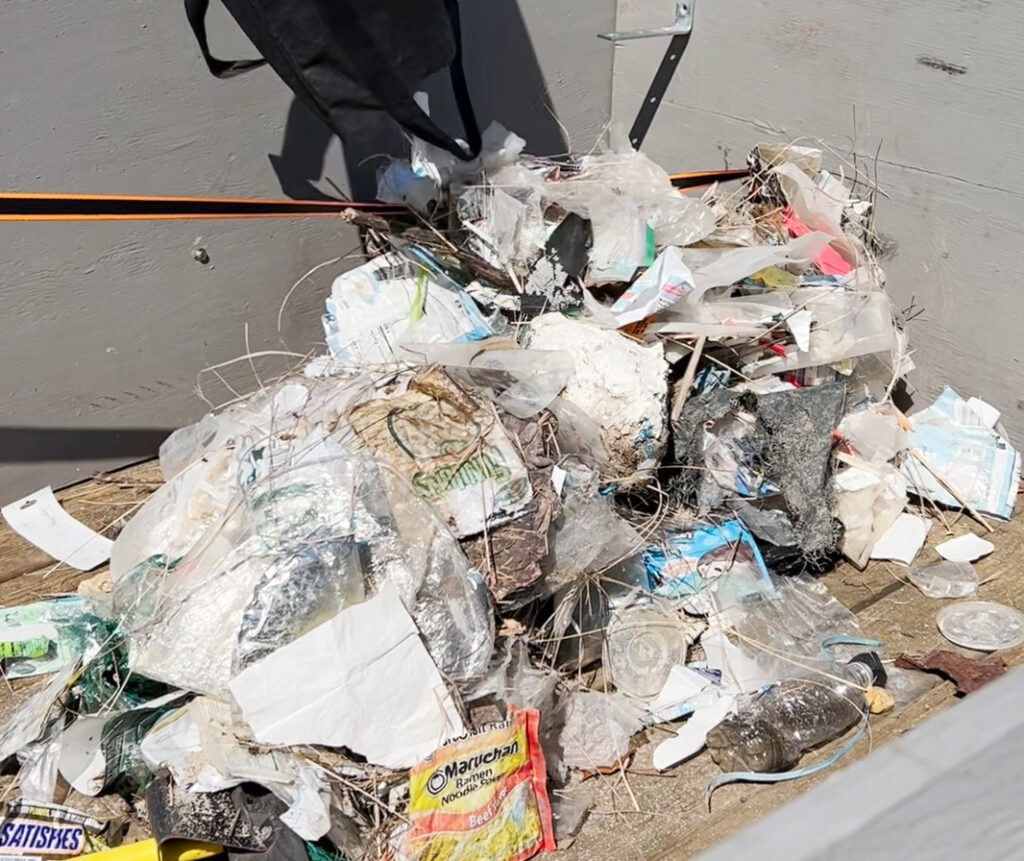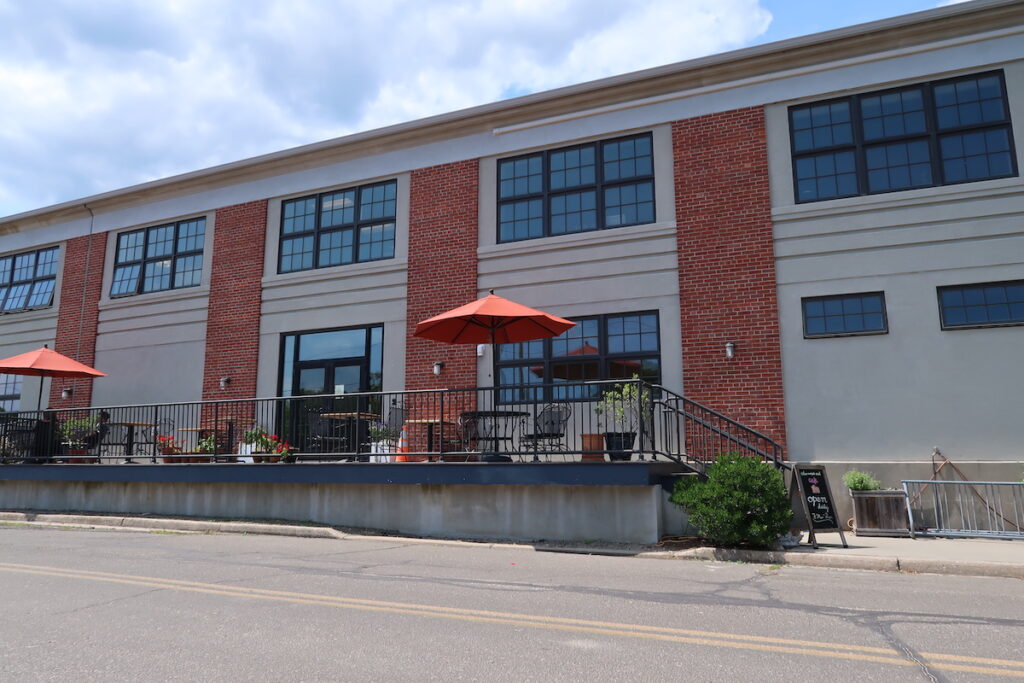For 100 years, agricultural research center in Riverhead has served as critical resource to region

A seed for Long Island’s powerhouse farming industry was planted with a single question: “Why should we not have a branch of the New York Experiment Station located on Long Island?”
The Rural New Yorker in 1888 quoted this anonymous query from a question box at the Riverhead farmer’s institute, highlighting the need for an agricultural research facility on Long Island, where markets and growing conditions significantly differed from the rest of the state.
So began the conversation that would lead to the founding of the Long Island Horticultural Research and Extension Center in 1922. Initially called the Long Island Vegetable Research Farm, the 30-acre facility was administered by the New York State Agricultural Station at Geneva, and aimed to study soil fertility and disease and insect control. In the century since then, the research center has grown into a 68-acre Riverhead facility dedicated to serve the research and extension needs of horticulture industries.
In those 100 years, Suffolk County has also become renowned as one of most successful agricultural regions in New York, thanks to plentiful aquifers, rich soils and a climate well-suited for farming — but also, at least partially, thanks to support from the research center.
“That’s one of those things you want to be modest about, but I’m confident, because we’ve learned from so many other businesses, that the work that we do here has helped them survive and succeed,” said Mark Bridgen, LIHREC director, ahead of the facility’s 100th anniversary celebration last Thursday. “There’s a $226 million agriculture industry here, so it’s big business. We do all the growers, we work with landscapers, arborists, designers, as well as home gardeners to some extent.”
The sprawling campus along Sound Avenue encompasses fields and research plots, state-of-the-art greenhouses, a nursery and container production area, and a plant tissue culture facility. Growers across the island visit regularly, bringing plants and problems to solve. A few interviewed by Times Review say the work of LIHREC has been integral throughout the years.
“To have this in our backyard is unbelievable,” said Kris Olsen, former owner of Homeside Florist in Riverhead, at a recent Plant Science Day that drew nearly 200 visitors.
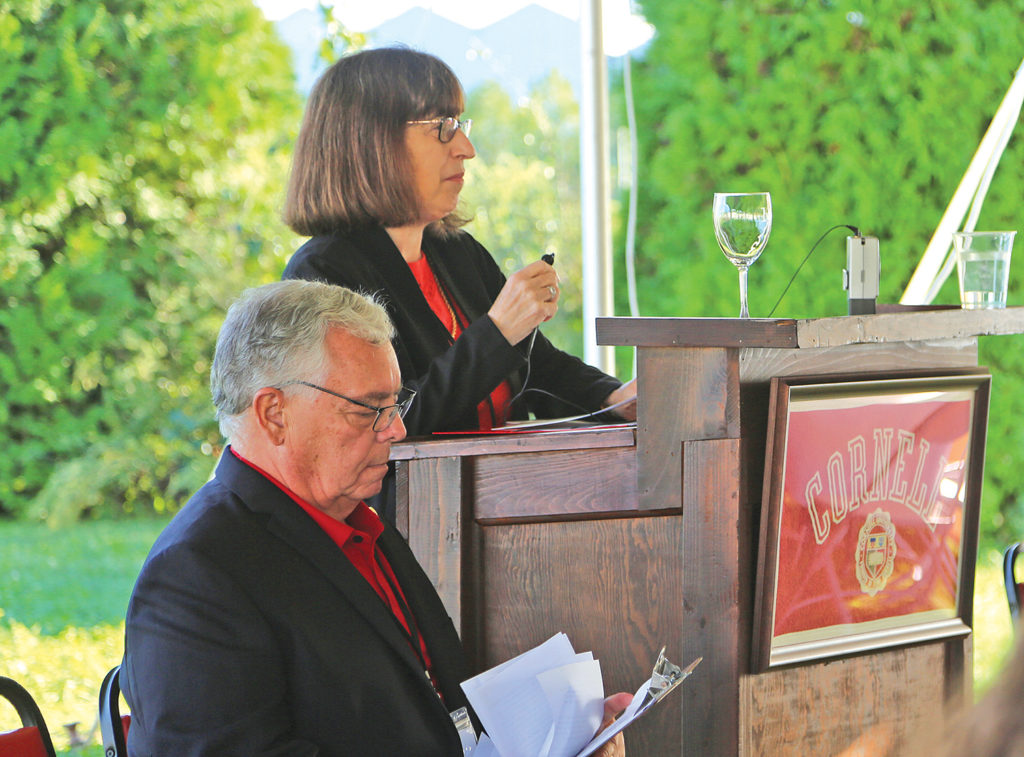
“The outreach and the ongoing continual education is phenomenal, and that’s what we need. The whole state benefits from it,” he added, emphasizing how “phenomenally respected” the institution is.
Jesse May, who works in greenhouse production at Whitmores in East Hampton, highlighted how closely she’s worked with LIHREC to keep plants healthy.
“They’ve helped me conquer problems, identify problems, they’ve done tons of lab work for me … where it’s just been a huge help to get our production from one year to the next,” she said. “The resources that we have available to us through them, it’s just invaluable.”
The LIHREC facility is not to be confused with the Cornell Cooperative Extension of Suffolk County down the road. Each New York county has its own cooperative extension program with budgets and personnel based on the strength of agriculture in that county, according to Mr. Bridgen. The LIHREC research center is a campus of Cornell University, which funds the facility.
“Our mission, those of us who work for the university, we have a mission to the entire state, whereas Cornell Cooperative Extension has a mission to Suffolk County,” Mr. Bridgen said. “We are the only horticulture research center in the United States that has scientists, professionals for each of the commodity industries as well as the cross disciplines. And the only way we can claim that is because of our close relationships between the Cornell University faculty and the Cornell Cooperative Extension.”
The research has the advantage of being within about a 50-mile radius of stakeholders, he added. Much of Long Island’s agricultural community — about 592 farms and approximately 31,000 acres of farmland altogether, according to a 2019 state report — is in eastern Suffolk County.
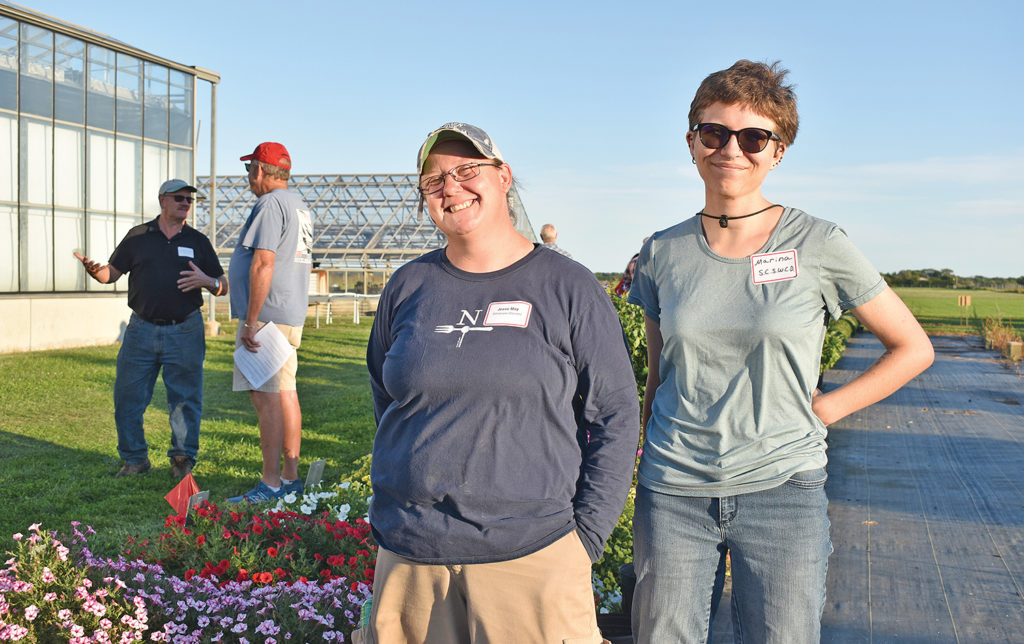
“The nice thing about that is that if they want to, they can run a sample over for us to look at or invite us to their place to help talk about a problem,” Mr. Bridgen said. “The other advantage is that, because of this nice relationship with the cooperative extension, we have specialists for each area.”
LIHREC offers plant pathology, entomology and weed science, making it a “one-stop shop” for the ag community. In the past 20 years, some of the facility’s accomplishments include breeding plants for resistance to disease and pests, and helping growers reduce pesticide use through programs like integrated pest management.
Vegetable scientists at LIHREC, for example, found that mustard plants can act as a natural herbicide and a natural inhibitor of certain root rot diseases, Mr. Bridgen said. “Not only do you get weed control, but you also get disease control. That’s pretty significant.”
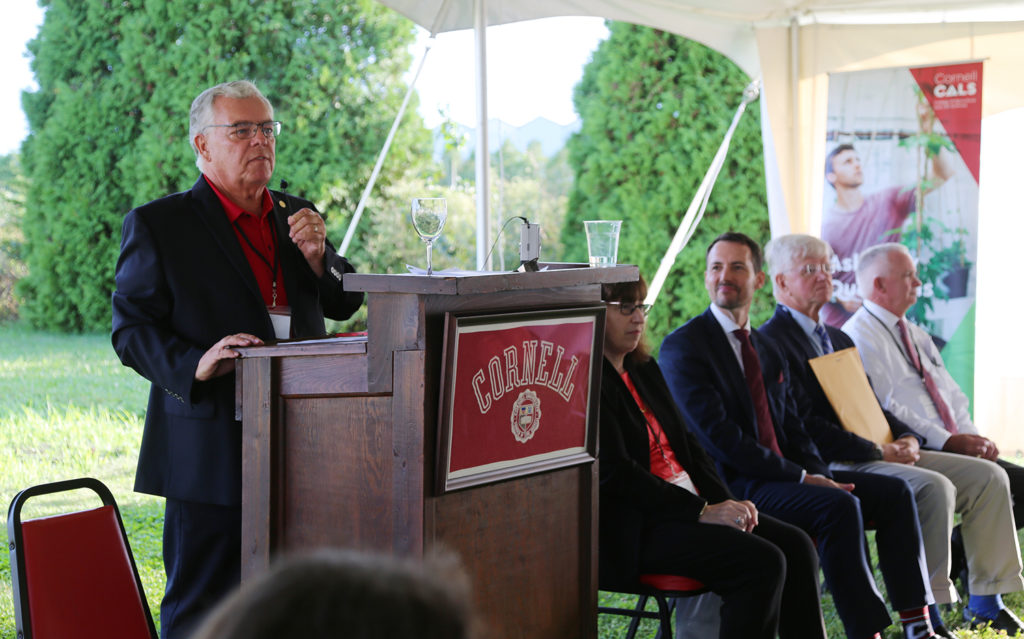
LIHREC celebrated its centennial, which passed on April 1, with a ceremony last Thursday that historically included the facility’s second visit from a sitting Cornell University president, and a formal resolution presented by state Assemblyman Fred Thiele (D-Sag Harbor) and state Senator Anthony Palumbo (R-New Suffolk) congratulating the research center on its 100th anniversary. The dean of the Cornell College of Agriculture and Life Science also paid his first visit to the campus since he was appointed during the pandemic.
“Everyone here is so committed to furthering the science because you don’t know what’s going to come next. And you don’t know what advances in the science are going to make a difference five, 10, 100 years from now, but they’re also so committed to working with all of you who are here and everyone in the community, to ensuring that that knowledge gets out there and makes a difference to what you’re doing,” said Cornell University President Martha Pollack at the celebration. “It makes not just the local community, but I would argue the whole world better because when one region works towards sustainability, the whole world benefits.”
Speeches from local politicians, including Suffolk County Legislator Al Krupski (D-Cutchogue), focused on the economic and cultural significance that agriculture holds on the East End, highlighting generational farm families that have worked the land for centuries and the trust LIHREC holds with the Long Island grower community.
“Agriculture is of critical importance here, and the families and the businesses that support agriculture are so critical, not just to our economy, but for the way of life that has evolved here over the centuries,” Mr. Thiele said. “The strength of Cornell isn’t just the science that they do, isn’t just the research they do. It’s the trust that they have with the agricultural community here on the East End of Long Island and I suspect all across New York state.”
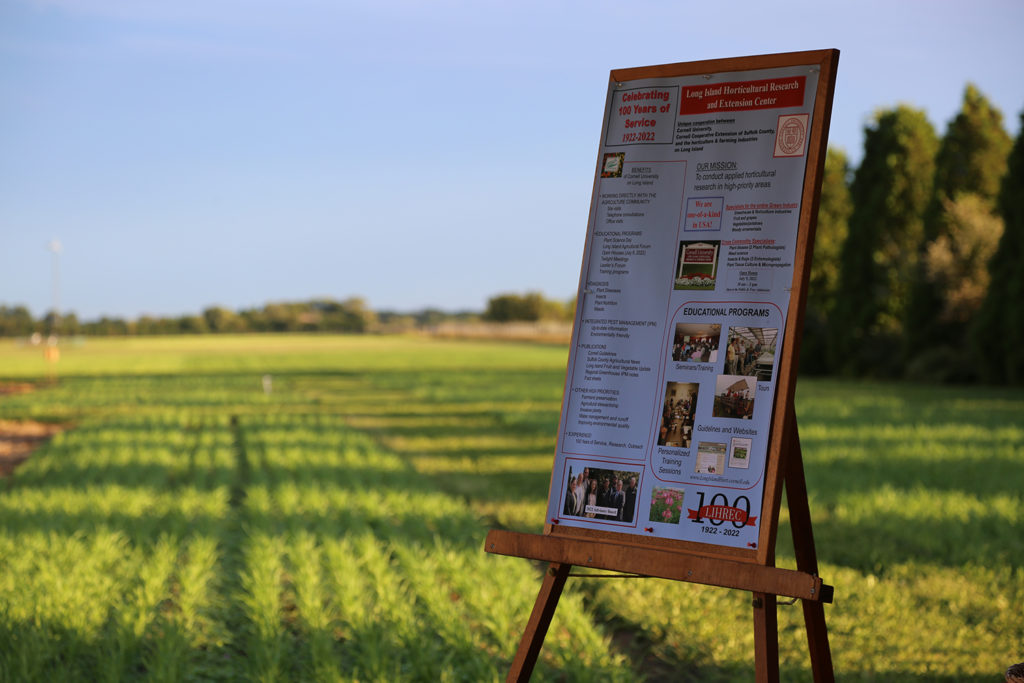
“What you folks do when it comes to disease and pest control and everything that this amazing agency has been doing [is] critical, because it’s a way of life for us,” Mr. Palumbo said.
Bob Anderson, who was born and raised on a vegetable farm on Roanoke Avenue, spoke as a stakeholder at the ceremony. His father, who is over 80 years old, still farms the land, he said.
“I asked him the question, I said, ‘What comes to mind with LIHREC? What do they do for you?’ And he goes, ‘Everything.’ He goes, ‘The entire package,’ ” he said. “I asked him, ‘Could you give me one example?’ And so he did, he gave an example.”
Mr. Anderson’s father recalled a crop-saving visit from a LIHREC researcher years ago, after the decline of his tomatoes following a storm. Everyone told him the plants had probably been impacted by saltwater from the downpour, but, as it turns out, the LIHREC scientist found an infestation of mites. He offered advice on how to control the pests and the crop didn’t fail, Mr. Anderson said.
“That’s how important it is for this group of people to be here,” he said, highlighting not just the science offered by the facility, but the bridge it provides between growers and government.
The celebrations will continue on Nov. 2 with the Long Island Nursery and Landscape Association, which plans to honor LIHREC staff with an award for men and women of the year, according to Mr. Bridgen.
“The roadmap to 2050 highlights moonshots,” Mr. Bridgen said. “Remember, you can’t have a moonshot without a firm base to push off. And that’s what our center has been doing all these years. We provide that solid foundation. We provide the fuel for these moonshots.”



